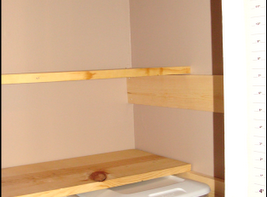Smart Home Integration: Stylish and Tech-Savvy Spaces

With advancements in technology, the concept of smart home integration has taken the world by storm. It combines stylish living spaces with cutting-edge technology, providing homeowners with a new level of comfort and convenience. From intelligent lighting and automated security systems to wireless entertainment systems, smart homes are becoming increasingly popular among tech-savvy individuals.
The Benefits of Smart Home Integration
There are numerous benefits of integrating smart technology into homes:
1. Convenience
Smart homes allow homeowners to control various aspects of their living spaces through voice commands or smartphone applications. You can adjust the temperature, turn on/off lights, and even lock/unlock doors remotely. This level of control adds a new dimension of convenience to everyday life.
2. Energy Efficiency
Smart home devices are equipped with energy-saving features that help reduce electricity consumption. For example, smart thermostats can automatically adjust the temperature when no one is at home, resulting in significant energy savings and lower utility bills.
3. Enhanced Security
Smart security systems enable homeowners to monitor and control their homes from anywhere in the world. With features like motion sensors, video surveillance, and smart locks, you can ensure the safety of your home even when you’re away.
Designing a Stylish Smart Home
When it comes to smart home integration, it’s crucial to strike a balance between technology and aesthetics. Here are some tips for designing a stylish smart home:
1. Concealing Technology
To maintain a sleek and minimalist look, consider concealing your smart devices. For example, install recessed outlets to hide power cables and use smart light switches that blend seamlessly with your home’s decor.
2. Integrate with Existing Design
Ensure that the smart devices you choose complement your existing design elements. Opt for sleek, modern devices that seamlessly integrate into your home’s overall aesthetic. This way, your smart home will appear stylish and visually cohesive.
3. Focus on User-Friendly Interfaces
While technology is at the core of smart homes, the user interface is equally important. Choose devices that offer intuitive and user-friendly interfaces, making it easy for everyone to operate them effortlessly.
The Future of Smart Home Integration
The future of smart home integration looks promising. As technology continues to evolve, we can expect even more innovative features and devices. Integration with virtual assistants and artificial intelligence (AI) will become more advanced, allowing for seamless control and automated decision-making within the home.
Intelligent appliances, such as smart refrigerators and washing machines, will communicate with each other to optimize energy usage and enhance user convenience. The possibilities are endless, and smart home integration is set to revolutionize the way we live.
Conclusion
Smart home integration combines style and technology to create living spaces that are both visually appealing and highly functional. With the convenience, energy efficiency, and enhanced security offered by smart homes, it’s no wonder that they are gaining popularity among individuals seeking a modern and tech-savvy lifestyle. By carefully designing the integration to match your existing decor and focusing on user-friendly interfaces, you can create a smart home that perfectly blends style with cutting-edge technology.


